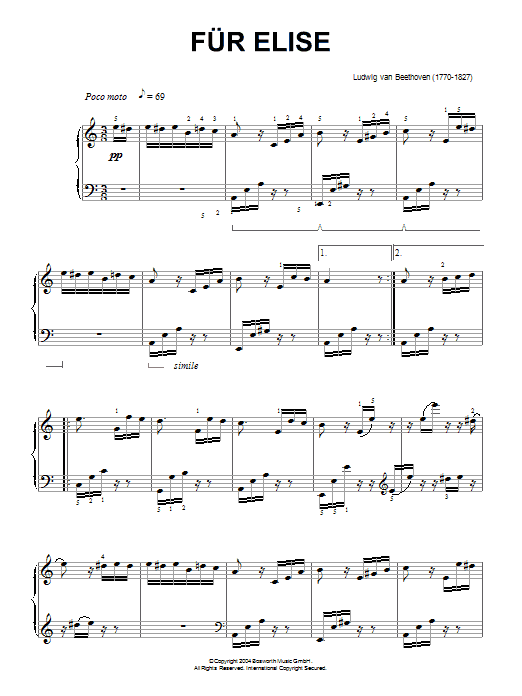Are you aspiring to master Beethoven’s timeless classic, ‘Für Elise’? If so, understanding how to read sheet music is a non-negotiable skill. Today, we’re unraveling the mysteries of sheet music with a comprehensive guide catered specifically for ‘Für Elise’.
Sheet music is like a universal language for musicians, and ‘Für Elise’ sheet music is no exception. Even if you’re a beginner pianist, don’t be daunted; with patient practice and a keen eye for detail, you’ll soon be playing ‘Für Elise’ like a seasoned pianist.
How to Read Sheet Music for 'Für Elise'
Firstly, ‘Für Elise’ is composed in A minor, a key signature with no sharps or flats in its natural form.
The rhythm is set in 3/8 time, which means there are three beats per measure and the eighth note gets one beat. These fundamental details lay the groundwork for understanding the ‘Für Elise’ sheet music.
The iconic opening phrase starts on E, above middle C, and swiftly moves down to D sharp, then back to E.
This pattern is your first stepping stone to unlocking the melody of ‘Für Elise’.

Breaking Down 'Für Elise' Music Notes
Next, focus on the bass clef accompaniment, which complements the melody and often mirrors the rhythmic pattern of the right hand. The left-hand part is crucial in setting the pace and mood of ‘Für Elise’, so give it the attention it deserves.
Sheet Music Symbols in 'Für Elise'
A pivotal part of ‘Für Elise’ is the series of rapid arpeggios that add depth and complexity to the composition. These may seem intimidating, but with meticulous practice, you’ll master them. Remember, practice makes perfect, especially when learning how to read sheet music for ‘Für Elise’.
Download Sheet Music
Music Notes Dynamics
Finally, pay attention to the dynamic notations in the ‘Für Elise’ sheet music. The expressive markings such as ‘pp’ (very soft), ‘f’ (loud), and the crescendos and decrescendos are all integral parts of the piece, allowing you to add your personal touch while remaining true to Beethoven’s intention.
Video Tutorial
Reading sheet music for ‘Für Elise’ can seem complex, but it’s a rewarding journey. With persistence, attention to detail, and a passion for music, you’ll soon be enchanting listeners with your rendition of this timeless classic. Stay tuned for more guides to help you navigate the fascinating world of sheet music.

